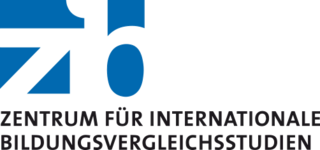Teaching mathematics compared between school types
Dr. Sonja Bayer➚, Research associate DIPF
The type of school learners attend is decisive for their further educational path. This refers not only to differences between school types, subjects available, and the likelihood of obtaining a particular educational degree, but also to learners' opportunities for cognitive and affective development. From the research on composition effects, which examines the influence of the student group on the performance development of the individual learner, it can be concluded that the specific composition of the student group at the different school types can be a factor. In contrast to student group composition, characteristics of the institution are referred to in the literature as a reason for different developmental opportunities at different school types. However, there is a lack of theoretical considerations and studies that attempt to explain and analyze the underlying mechanisms.
The aim of this dissertation was therefore, on the one hand, to compare teaching between school types and, on the other hand, to examine potential mechanisms for mediating differences in teaching processes. In order to identify relevant characteristics, the present study links the system level with theoretical models and findings from empirical teaching research. Specifically, characteristics of teaching content, teacher beliefs, and the student group are examined as mediating factors. In addition, the importance of differences in teaching processes for the cognitive development of the learners was to be investigated. Since the description of teaching is based on questionnaire data, it was also examined whether the used instruments are invariant between school types and to what extent the data is biased by response tendencies.
For the empirical analyses, data from the national PISA 2012 study focusing on the teaching of mathematics and the mathematics performance of learners in ninth grade was used. In a follow-up study (PISA Plus), the same learners were tested and interviewed again in tenth grade. In addition to the information provided by learners, the secondary analyses included the responses of mathematics teachers regarding their teaching.
Key findings
- Analyses of invariance show that the instruments used to assess the learners' attitude, and techers's beliefs about teaching, are in some cases not suitable for making comparisons between school tyles. Moreover, the data is biased in terms of reponse tendencies, which is why comparative analyses are only carried out under control of these.
- In accordance with previous findings, the classes of the different school types vary not only in terms of average performance and social composition, but particularly in the content taught, as well as cognitive activation and student-oriented teaching methods. Differences in learners' attitudes and discipline in the classroom could not be replicated.
- Differences in the teaching processes are partly conveyed by the various contents taught and the composition of the learning group
- The relationship between student-oriented teaching methods and achievement development differs between school types. there is no correlation between the characteristics of cognitive activation and achievment development within the school types.
Reference: Bayer, S. (2020). Mathematikunterricht vergleichend zwischen den Schularten [Teaching mathematics compared between school types]. Waxmann. https://doi.org/10.31244/9783830992479➚
https://www.pedocs.de/volltexte/2020/21070/pdf/Bayer_2020_Mathematikunterricht_im_Vergleich.pdf➚
Doctoral supervisor: Prof. Dr. Eckhard Klieme➚
